A pattern such as ribbing is usually knitted along the edge of a garment, as well as along the bottom of the sleeves and neckline of jumpers, sweaters or pullovers. Used for knitting cardigans, hats, scarves, snoods, socks, mittens.
It allows you to keep the shape of knitted items, makes them comfortable and warm. In some cases, the elastic stretches, the product loses its appearance. To prevent this from happening, you need to follow a few simple rules when knitting.
Types of knitted elastic bands
There are more than 30 different ways to knit elastic.
The following types are considered the most popular:
- Simple. It is knitted by alternating front and back loops through one (1x1) or several (2x2, 3x3 and more). In the back rows, the loops are knitted according to the pattern. The fabric is the same on both sides.
- English or patent elastic. The most popular type of pattern. It is formed similarly to a simple elastic band. The peculiarity of knitting is yarns: they are made after each front loop, while the back loops are not knitted. Then the front loops must be knitted together with the yarn from the previous row. With this knitting, the fabric is elastic and flexible, it retains its shape well: due to the yarns, each loop is reinforced, it turns out double. The disadvantage of this method is the significant consumption of yarn.

- False. A lighter version of English elastic, very similar to it in appearance. It differs in knitting technique, has a lower density, and stretches quickly. One of the advantages is low yarn consumption.
- Semi-patent. The front rows of this pattern are knitted like a patent rib, with yarns. The back rows are like a simple one, 1x1.
- Double or hollow elastic. Knitted with a combination of front, back and slipped loops. With this knitting, you get 2 pieces connected by the lower and upper rows. Elastic, keeps its shape for a long time, provides a tight fit to the body. This pattern is used to knit cuffs, collars of shoulder garments, as well as hats and scarves. Yarn consumption is 2 times higher than usual.
- Polish gum. It is formed by a certain order of alternating front and back loops. The fabric is of medium density, soft to the touch, with well-defined edges. It is often used when knitting children's clothing - cuffs and collars knitted with Polish elastic do not press on the baby's delicate skin, but retain heat well.
- Italian elastic. Refers to decorative types. The volumetric effect is achieved with the help of thrown loops, which are knitted through a row. It is used mainly for finishing when knitting cardigans, jumpers, hats.
- French. Decorative elastic with figured edges formed by a loop thrown or moved in each row. Used for knitting jumpers, sweaters, snoods.

- Canadian. Another type of decorative elastic. It is knitted as follows: 2 rows alternate: 1 front loop and 2 back loops. In the next row, 1 more loop from the previous row is pulled out along with the front loop. It turns out a beautiful figured path. This knitting method can be used for any product.
An elastic band that does not stretch
A common problem when wearing knitted items is stretched hem and cuffs on the sleeves. Sometimes this can happen within 2-3 weeks. The item loses its appearance, becomes unaesthetic and uncomfortable.
How to knit an elastic band with knitting needles so that it does not stretch: 5 simple rules:
- To knit this pattern, you should take knitting needles 1-2 sizes smaller than for the main fabric. If the product is knitted, for example, on knitting needles No. 4, then for the elastic it is better to use No. 3 or 2.5. Then it will be dense and will hold its shape well.
- The choice of yarn plays a big role in maintaining the elasticity of the elastic band. It is best to use mixed fibers: wool/acrylic, cotton/acrylic. Elastic bands made of natural yarn, especially cotton and cashmere, stretch very quickly. Products made of natural fibers with the addition of viscose and silk do not hold the elastic band well. Therefore, when knitting from 100% cashmere, linen or cotton, as well as from mixed yarn that contains silk or viscose, you should choose models without this type of finishing. It is better to decorate the edge in a different way. When adding artificial fibers to the yarn, it becomes more flexible and springy. This property is also transferred to the knitted product - the item retains its appearance longer and is less susceptible to wear.
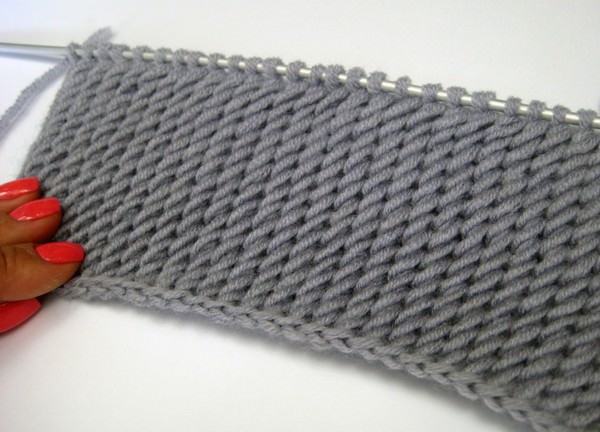
- When knitting elastic, you can use additional threads that are attached to the main one. This is done to give the fabric additional elasticity and to prevent stretching. You can add spandex or elastic thread. It can be transparent or colored. The color is selected to match the main yarn. Some needlewomen knit the elastic thread into the cuffs of the finished product using a crochet hook.
- The knitting density should be medium: do not tighten the loops too much or knit too loosely. In the first case, you will get an inelastic finish. It will be uncomfortable to wear such a thing. In the second case, the appearance will quickly be lost, the edge will be stretched, the shape will be lost.
- In no case should you steam the elastic band or iron it. Heat treatment will hopelessly ruin the item. No manipulation will help restore it. The only thing left to do is to unravel and retie it.
On a sweater
When knitting a sweater, the elastic can be along the bottom of the product, on the cuffs and collar. In this case, you should choose varieties with high density: double, English or simple. The entire product can be knitted with this universal pattern. In this case, different types of elastic are combined, decorative ones are used, as well as false ones to reduce yarn consumption.
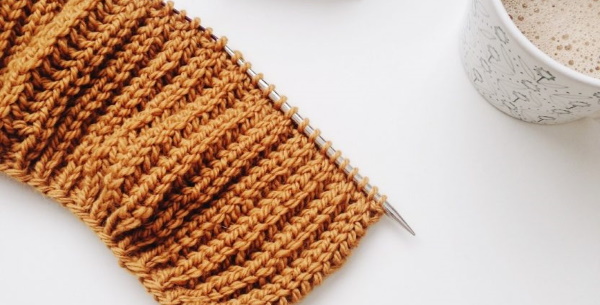
It is important to know how to knit elastic bands with knitting needles so that they do not stretch when knitting a neckline, cuffs or the bottom of a shoulder garment.
Tips for beginner knitters:
- You should choose a blended yarn: semi-wool or semi-cotton, with an acrylic or polyester content of 15% to 50%. If knitting from natural yarn, add a transparent spandex thread or elastic thread of the corresponding color.
- The thickness of the knitting needles should correspond to the thickness of the yarn. Usually the manufacturer indicates the recommended number on the package. For knitting elastic, you should take knitting needles 1-2 mm thinner than for the entire product.
- Keep to medium density, do not tighten the loops, but do not loosen the knitting either.
- If it is planned that the cuff will tightly embrace the wrist, then when moving to the main pattern, it is necessary to expand the fabric. To do this, in the last row of the elastic, yarn overs are made, evenly across the entire width, according to preliminary calculations.
- When carrying out wet-heat treatment of a sweater, jumper or pullover, do not wring out the product by twisting it. You should carefully squeeze out excess water and hang it to drain over a bathtub or basin. If wet-heat treatment is carried out in a washing machine, you should choose delicate modes of the detergent that correspond to the composition of the yarn.
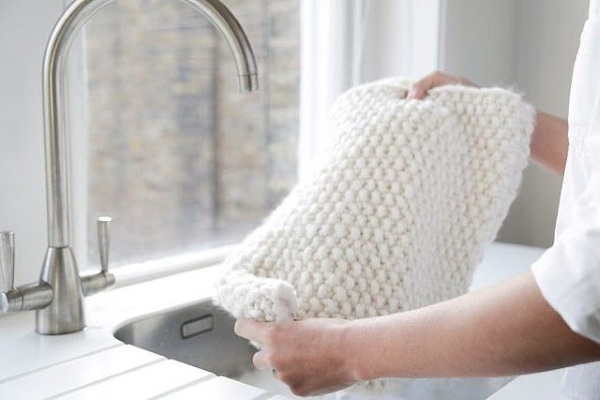
- The water temperature for wool should not exceed 20OC, for cotton and semi-wool – no more than 40OC. Knitted items can be spun in the washing machine at a speed of no more than 400 revolutions. Otherwise, the item will shrink several sizes.
Socks
Knitting socks begins with an elastic band, usually using a simple pattern - 1x1. Needles are taken 1 mm thinner than those recommended by the yarn manufacturer, so that the fabric is denser and holds its shape. Do not forget about the composition of the yarn, you can add an additional thread to natural fibers to give elasticity and wear resistance.
Usually, items that stretch are those that are knitted loosely or when the loop calculations are done incorrectly.
You can knit a double hollow elastic band for the top of the socks, especially if they are knitted from thin yarn. This knitting method will prevent stretching. Due to the high density of the fabric, the shaft will not gather like an accordion. For socks, mittens and gloves, you can use a knitting method such as an elastic band with a short loop removed. Another name is one and a half or pearl elastic.
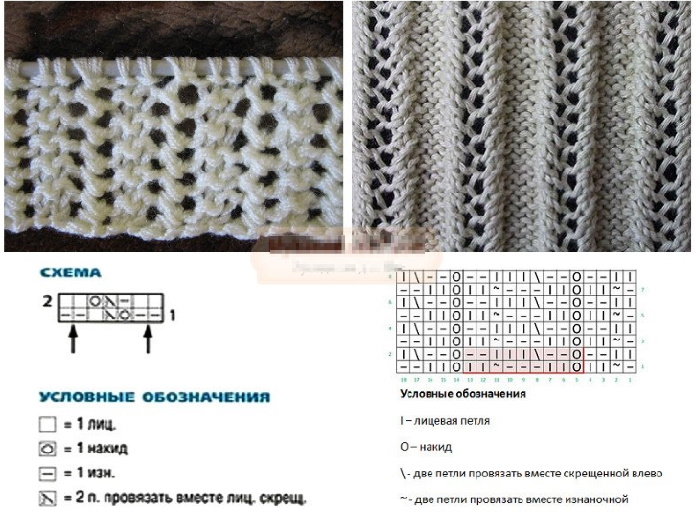
It is knitted as follows:
- First 2 rows knit as simple 1x1.
- 3rd row: knit the purl stitches as usual, and remove the knit stitches without knitting, while the thread remains behind the work.
- 4th row - knit with a simple elastic band.
- 5th row knitted in the same way as the 3rd.
- Starting from the 6th row, repeat rows 3 and 4.
The result is a dense and elastic elastic band with very even, beautiful edges on the front side. The downside of this method is that the pattern is not double-sided, it has a back side. But it holds its shape perfectly and does not stretch for years.
Hats
How to knit an elastic band with knitting needles so that it does not stretch and does not cause inconvenience on the hat is discussed below. When knitting hats, the most important thing is an accurate calculation of the number of loops. It is necessary to knit a sample with the selected patterns, no less than 10x10 cm in size, close the loops. Wash and dry it. After that, you can make a calculation.
To calculate the required number of loops more accurately, it is important to measure the sample in a relaxed state and in a stretched state. When knitting, you should start from the width of the sample in a stretched state. Then the hat will tightly cover the head.
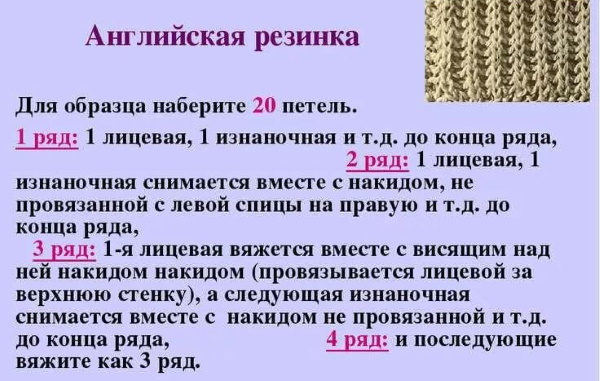
For the bottom of the hat, it is better to choose a double hollow elastic band, the structure and density of which are most suitable for knitting hats. The advantage is a two-layer fabric that is not blown through. This is especially important for children's things. When knitting a hat with a lapel, you can use other types of elastic bands: simple, English or semi-patent.
The additional layer will also help retain heat well.
When yarn with a high wool, angora, merino or cashmere content (more than 50%) is chosen for knitting a headdress, you can knit the bottom with a rib with a short loop removed or a one and a half loop, which was mentioned above. Wool has increased thermal conductivity, and the pattern is dense enough to ensure comfort.
Knitting in the round on circular needles for beginners
Knitting in a circle is used for different items. You can knit a sweater, pullover, jumper, dress, tunic or skirt in a circle. Most hat models are knitted in this way. Hayward is a type of jumper that is knitted entirely in a circle from the top, then the sleeves are made separately, also on circular knitting needles.
This knitting method is very simple and convenient. The items are obtained without seams, do not require additional assembly, and sit beautifully on the figure. They are cozy and comfortable, and retain their shape after many washes.
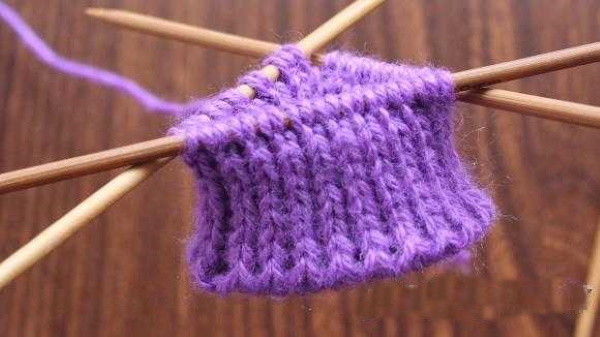
Knitting in a circle is easy even for beginner needlewomen. All types of elastic bands imply front and back rows, but they can be easily adapted for circular knitting needles. To do this, you need to knit a sample with turning rows according to the pattern. It is important to understand the structure of the pattern, then it will be easy to repeat it in circular knitting.
The set of loops on circular knitting needles is done in the same way as on straight ones. Then you need to close the knitting. To do this, pick up 1 extra loop. When the set is finished, you need to remove the first 1st and pull it through the last one, tighten the thread - the ring is ready, you can start knitting the elastic according to the chosen pattern.
When knitting in a circle, the main point is to maintain the same density so that the elastic looks beautiful and neat. You need to watch the density, especially for those who have just started to master this type of needlework.
General information about which types of elastic bands are more suitable for knitting different knitwear items is presented in the table:
| Types of rubber bands | Sweater, jumper, pullover | Cardigan | Tunic, dress | Hats, scarves, snoods | Socks, mittens, cuffs |
| Simple | + | + | + | + | + |
| English | + | + | + | + | |
| False | + | + | + | ||
| Semi-patent | + | + | + | + | |
| Double (hollow) | + | + | + | + | + |
| Polish | + | + | + | ||
| Italian | + | + | + | ||
| French | + | + | + | ||
| Canadian | + | + | + | ||
| Elastic band with a loop removed | + | + | + | + | + |
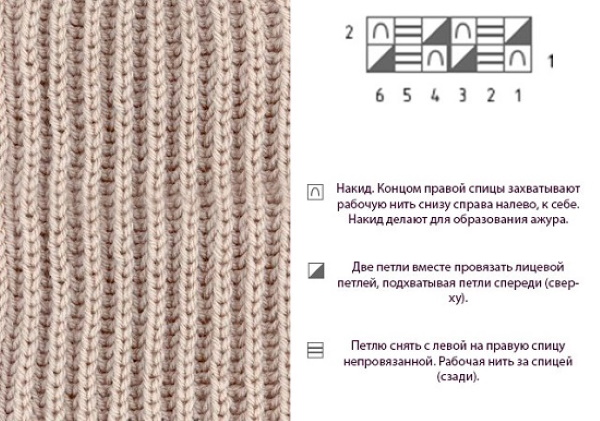
Even beginners can easily figure out how to use different types of elastic bands to decorate the edges of knitted items. To prevent them from stretching, you need to choose the right thickness of the knitting needles, yarn composition, additional threads, and maintain an average knitting density.
It should not be forgotten that knitted items cannot be steamed or ironed. Then the sweater, hat, jumper, pullover or socks will become a favorite item in the wardrobe, will retain their shape and appearance for a long time.
Video on how to knit an elastic band with knitting needles
Knitting for beginners. How to knit a rib:
